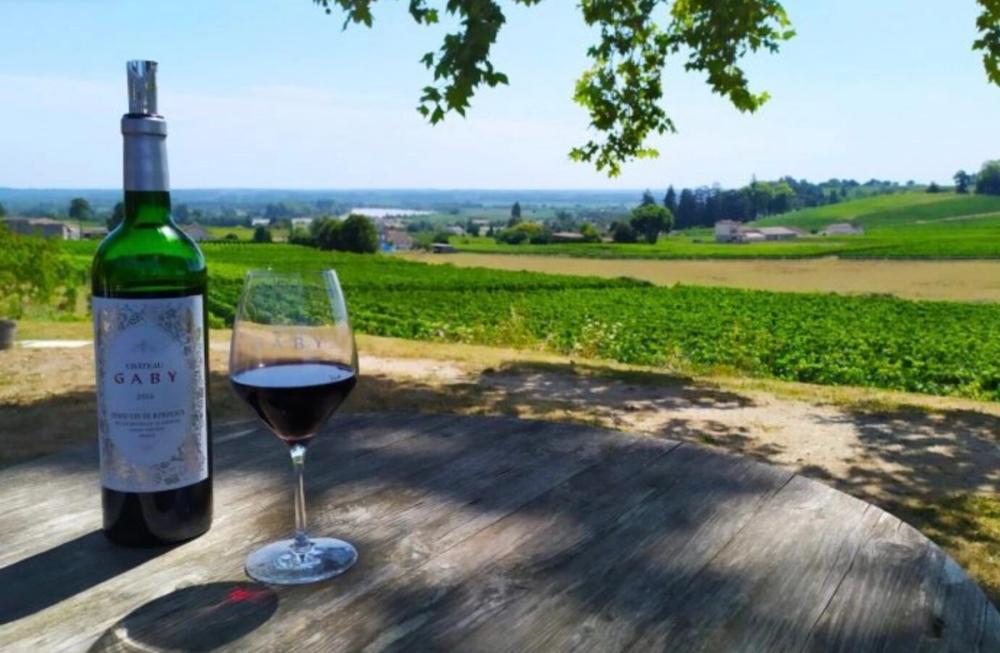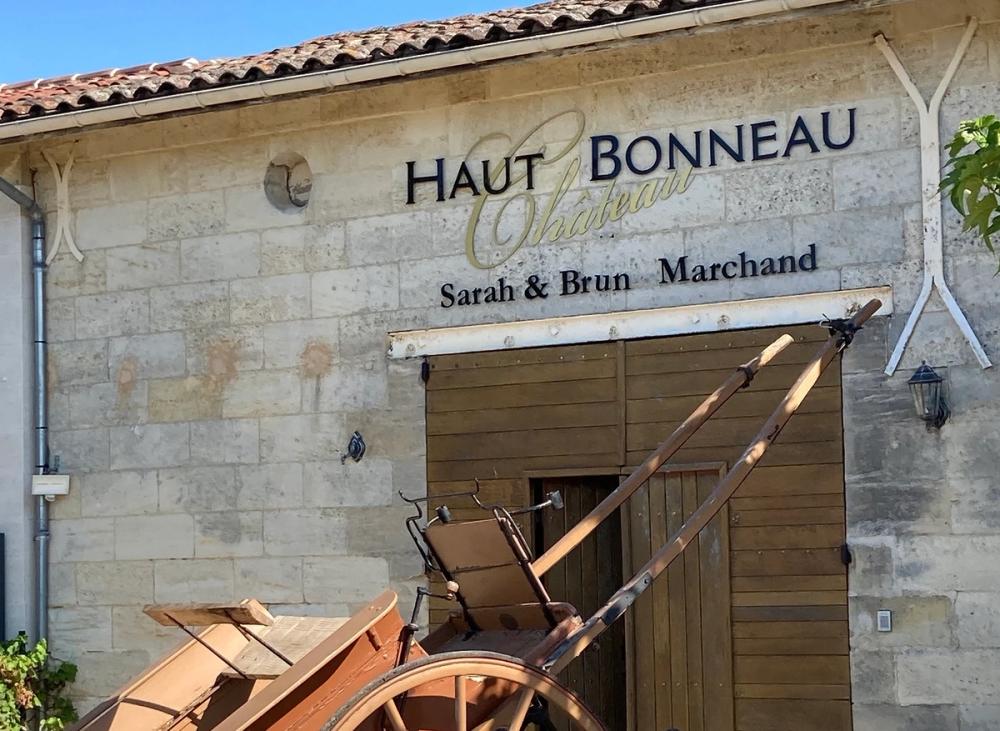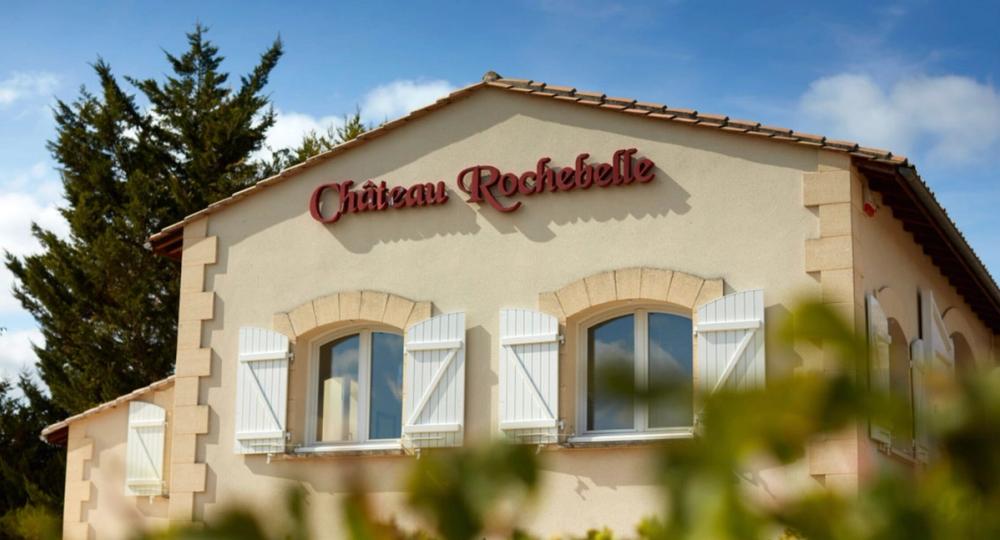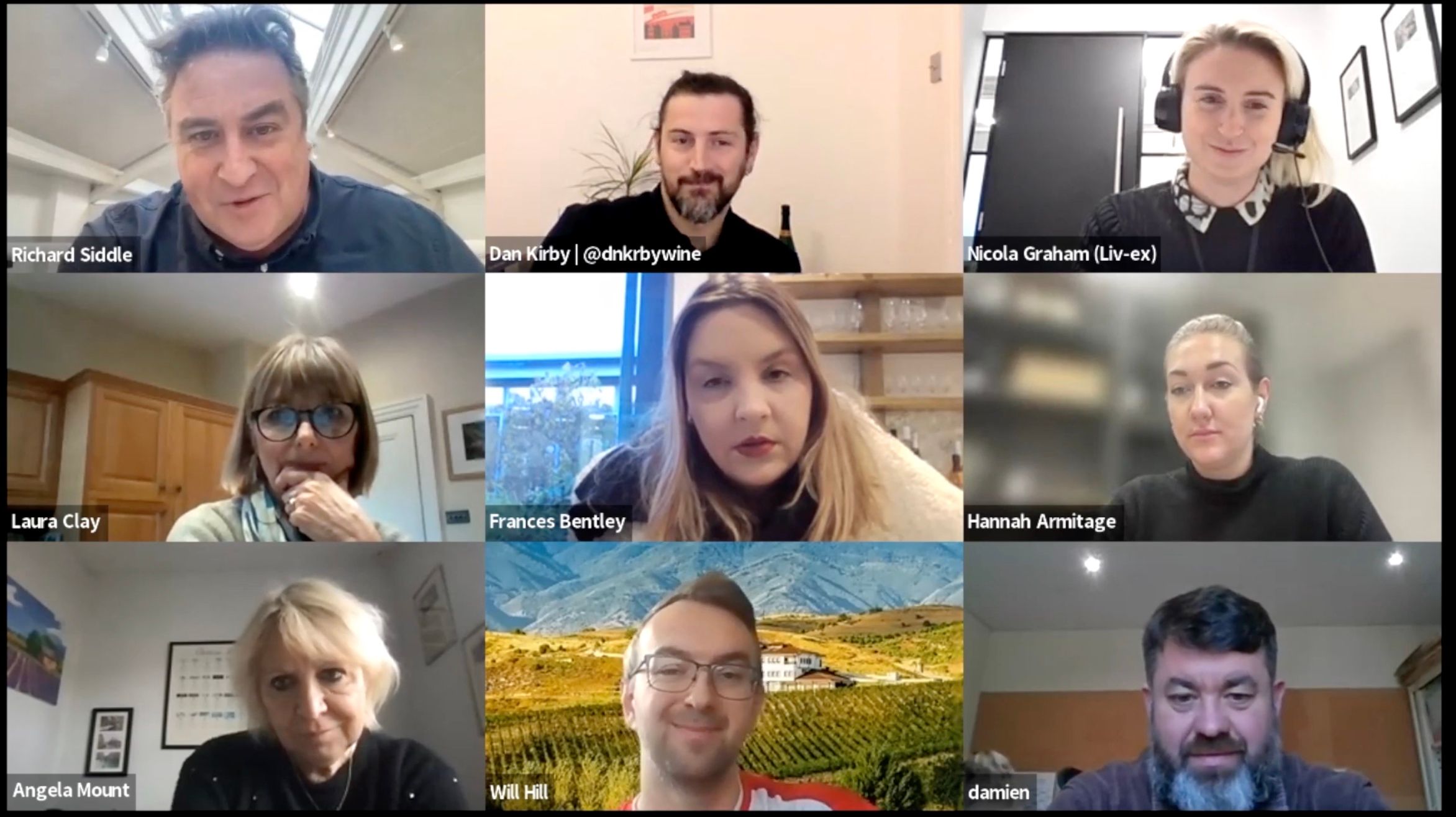You can read Part 1 of The Buyer’s Right Bank Bordeaux debate with Union of Syndicates of St Emilion by clicking here.
Our thanks got to our panel of leading wine figures, buyers, consultants and merchants from across the UK wine industry that included:
- Angela Mount, wine consultant and journalist
- Laura Clay, wine consultant, WSET wine educator
- Will Hill, wine buyer, Honest Grapes
- Frances Bentley, wine buyer, LWC Drinks
- Nicola Graham, head of content, Liv-ex
- Dan Kirby, wine consultant, Adnams
Representing Bordeaux’s Right Bank was:
- Damien Landouar, general manager, Château Gaby, Canon Fronsac and president of the Wines of Fronsac & Canon Fronsac.
The panel had the opportunity to compare and analyse the evolution of wines between older and younger vintages by tasting a range of wines from each of the main areas – St Emilion, Pomerol, Lalande de Pomerol, Fronsac and Canon Fronsac – and some of their sub appellations.
Fronsac and Canon Fronsac

Château Gaby has worked hard over the last 10 years to tone down its wines to make them more approachable with softer tannins
Fronsac and Canon Fronsac, where Château Gaby is situated, is on the left side of the Isle river on the Right Bank and has vineyards dating back to the Romans times. Here the mixed topography means many of its vineyards are planted high up on hill sides with a complex and diverse terroir. This is very much Merlot territory with more plantings of Cabernet Franc in its limestone areas, says Landouar.
Around 65% of Fronsac and Canon Fronsac wines are sold in the domestic market with its export sales driven by the UK, Belgium and the United States, he says.
Angela Mount says that whilst the trade might be aware and understand the styles of wine you can expect to taste and buy from Fronsac and Canon Fronsac it is not well known by the consumer. “But that is not impossible,” she stresses, when you look at how other regions around the world have been able to transform their position with wine drinkers. Like in South Africa and the emergence of Swartland as an important, trend setting region in its own right.
It’s a case, she says, of putting “benchmark” wines in place from a particular appellation or region that buyers and consumers can fully understand. Where the emphasis is very much on explaining why Fronsac is different from St Emilion and different from Pomerol. “That’s the challenge,” she says.
Laura Clay says she is “absolutely delighted” to see Château Gaby also has Grand Vin de Bordeaux in big letters on its label and it has so much more marketing power than Canon Fronsac. “I think it’simportant that the properties of Fronsac and Canon Fronsac don’t rely on their own appellations. They have to put Grand Vin de Bordeaux on their labels as well.”
It’s also key, she adds, that Canon Fronsac is being marketed under one association with Fronsac so that they can combine their efforts when talking to the trade.
Only when you are doing a wider Bordeaux tasting can you really show the differences between a Fronsac and Canon Fronsac with the wines from other parts of the Right Bank or Left Bank, she says.
More approachable wines
First up Damien Landouar was able to go through its 2010 (£50) and 2018 (£40) wines from Château Gaby. He says if you were picking out a Fronsac wine in a blind tasting then it would be the wine with “a lot of character” where it will be “fresh and fruity” on the palate thanks to the Merlot and heavy limestone soils.
The big difference in Fronsac and Canon Fronsac over the last 10 years, he says, has been the work done to tone down what were big, strong wines, to make them more approachable, easy to drink with softer tannings and brighter fruit.
Personally he has been able to bring some of the techniques he learnt whilst working making wine in South Africa into what he is doing at Château Gaby. He is, for example, using far more punch downs and looking at temperatures it uses during the fermentation process (24 to 26 Celsius compared to 30 to 32 celsius), and is also picking earlier to keep more acidity in the grapes. All of which helps makes “more round and delicate wines,” he adds.
He has also been looking at his oak treatment so whilst in 2010 he was using 70% new oak with 12 months of ageing, then from 2012 it has been 50% new oak and 24 months of ageing and then from 2018 he started to introduce white barrels with a light toast, and then in 2020 started to work with amphora. As a result his wines in the future will be 50% new oak, 10% amphora in the blending and 40% aged barrels. The amphora can help give “crispy fruit” characteristic to the wine.
Clay says she thinks it is “typical Canon Fronsac” style and “is richer and darker than a St Emilion wine”. It’s also “delicious, really chocolatey and smooth”.
Mount says the wine has the “meaty” and “intense” flavours she expects from Fronsac, Canon Fronsac wine. “It’s quite muscular at the start and in the past there would have been a lot more tannin at the end, but the finish is really fresh and lifts because of the lighter style and acidity and freshness – which is what people are looking for. It has a level of opulence too and the balance is really interesting.”
Dan Kirby at Adnams says there are also similar characteristics when compared to the Château Gaby 2018 where you still have those “firm” tannins and “darker fruit” and it is quite an “intense” wine but it has become “softer”. “It’s evolved really interestingly.”
St Emilion

Moulin Galhaud is a good example of the fresh, ready to drink wines now being made in Saint Emilion
Next the panel turned to Moulin Galhaud, Saint-Emilion Grand Cru 2018 (£35) and 2010 (£25) vintages. The 2010 is 95% Merlot, 5% Cabernet Franc, matured in 100% new oak with 18 months ageing and comes from clay and limestone soils.
Mount found the 2010 a “rich and sumptuous wine” with “dark berries” and has “well integrated tannins”. That “concentration and richness” carries through to the 2018 vintage, but again it also has lovely a “freshness lift” coming through with its acidity and you can see “the family pattern coming through between the two, which I see as a positive,” she adds.
Clay says there was a marked difference between the oak in the two vintages with a more balanced approach in the 2018. This, though, is a wine to drink now, compared to the Gaby which still has lots of time to come into its own.
Kirby says Saint Emilion Grand Cru can be a peculiar one for customers to understand in terms of Saint Emilion quality levels and what they are getting when it comes to ‘Grand Cru’ compared to Grand Cru Classé, plus the fact you can get Saint Emilion Grand Cru at all price levels. “It does not necessarily mean that Grand Cru means you are going to get a premium, expensive wine and that confuses consumers a little bit. The price does not always equate to what the label suggests.”
Clay can understand the confusion, but then it is ‘Grand Cru’ based on an appellation, an AOC, and not a classification. “It’s a difficult one to explain. It’s really complicated,” she says.
Lussac Saint Emilion
Lussac Saint Emilion is a largely elevated area in the north east of the Saint Emilion appellation and is one of Saint Emilion’s largest appellations at around 6,000 hectares, alongside Montagne. It has diverse soils types with a lot of limestone, clay and sand, which all helps add complexity to the wines, says Landouar.
Clay says that diversity also comes through in the quality of the wines from the area as well.
“You can get really good value from this region,” says Bentley. “A hundred per cent.”
Will Hill at Honest Grapes agrees: “It’s always been an area where you know if you spend £10 or £15 you are not going to be disappointed. It’s a good safe bet.”
As are Puisseguin Saint-Emilion wines, agreed the panel, which has 100 winegrowers producing quality wines from its 732 hectares.

The third generation Silvestrini family behind L’Egerie de Château Chéreau
“This is also true for the wines of Puisseguin Saint-Emilion, where 100 winegrowers are producing quality wines on 100 hectares,” adds Landouar.
That value certainly comes through, felt the panel, in the L’Egérie de Château Chéreau, Lussac Saint Emilion wines which retail for only £10 for both the 2010 and 2018 vintages.
Kirby thinks “there is a humungous” difference between the two vintages with the 2018 being “very fresh and juicy, quite playful and approachable” and the kind of wine he could sell a lot of. Whereas the 2010 is more “chunky, broody and intense” and a lot more “old school, classic and traditional in style”. ‘They are clearly trying to make a fresher, younger, more modern style,” he adds where even the label is markedly different.
Mount agrees: “It’s quite tannin dominated.”
Montagne Saint Emilion
Montagne Saint Emilion is a similar size to Lussac Saint Emilion at 1,600 hectares and has a lot of clay and sandstone, particularly on the small hills in the area and limestone. It is neighboured by Saint-Georges Saint-Emilion, the smallest appellation of the group with only 200 hectares, 25 winegrowers and clayey limestone soils.

Château Haut Bonneau is now run by Bruno Marchand and his wife Sarah who took over the property from Bruno’s father Maurice
From here the panel had the chance to taste the 10 hectare Château Haut Bonneau Montagne Saint Emilion 2018 and 2012 (both £18) an 80% Merlot and 20% Cabernet Franc blend and 12 months in barrel.
“I think it is lovely,” says Mount. “I am a huge fan of that style. The Cabernet Franc just brings that gorgeous raspberry lift. It’s very elegant and very stylish.”
Of the two Kirby says he prefers the “plusher, riper, younger, slightly more fruit forward style of the 2018”. “I would happily have this now.”
Clay agrees and feels the 2018 has “beautiful drinkability” compared to the 2012. Mount was particularly drawn in to the 2018 by its “sumptuous dark cherry” notes and keeps having to go back to being so fresh.
But then 2018 is already carrying four years of ageing, which is far more than you would expect if you were drinking wine from the New World, adds Clay. “That 2018 is beautiful and absolutely perfect for drinking now.”
There are more vineyards planting Cabernet Franc in Montagne Saint Emilion and across the Right Bank, says Landouar. It is a solid variety to compete against climate change and does particularly well on higher limestone slopes where it can produce “fantastic” grapes. “It’s a very good grape variety.” But Merlot’s future is still very strong too, he adds.
Grand Cru Classé Saint Emilion

Château Rochebelle has been making wine since 1847
Next to taste was the Château Rochebelle Grand Cru Classé Saint Emilion 2012 (£40) and 2018 (£55)is a three hectare property, based on limestone soils, in the Grand Cru Classé of Saint Emilion and its wines are a 85% Merlot and 15% Cabernet Franc blend made from, on average, 40 year old vines, with 12 months ageing in 80% new oak.
Kirby picked up on the fact that here, as in so many cases across Bordeaux, the younger vintage is actually more expensive than the older one. “That’s very interesting from an investment point of view where you can pick these wines up today at the same price as you paid for them 10 years ago,” he says.
Nicola Graham at Liv-ex says a lot of Right Bank and Bordeaux pricing will be dictated by en primeur and the price the wines were initially released at. Hence why you see such fluctuations in price. “It’s fascinating to see how the market changes and people will pay what they think they are worth.”
Lalande de Pomerol

Château de Viaud concentrates on Merlot and Cabernet Franc and is one of the oldest properties in Pomerol
Then it was time to head to Lalande de Pomerol and to Château de Viaud in particular and its 2012 (£22) and 2018 (£20). This is one of the oldest and largest properties in the appellation with 21 hectares of land, mainly made up of clay and gravel. This is 85% Merlot and 15% Cabernet Franc and 18 months ageing in barrels.
The Lalande de Pomerol appellation covers 1,150 hectares which includes 155 different vineyards. This compares to Pomerol with its 800 hectares and 125 vineyards, says Landouar.
“This is a good wine and good complexity,” says Clay. “It’s got liquorice and black fruits and is showing some age and and tertiary complexity.”
Mount picked up on what she called its “generous” style and its “succulent, sweet fruit streaming through” on the palate. “It’s almost voluptuous in style.”
Bentley found them to be both “lovey and elegant” wines with “freshness” and strong “appealing”fruit characteristics. “I think wines like that which are quite immediately expressive do really well in general in the on-trade.”
Landouar says this style of wine represents a “very good level” within Lalande de Pomerol and is typical of the fresh and pure fruit you get in the area, although you normally see more red fruit characters coming through. “It’s very rich and very nice and very good.”
Huge diversity
(Click here for Dan Kirby and Liv-ex’s Nicola Graham on pricing and value in Right Bank and Bordeaux wines)
What is clear from the tasting, says Clay, is the structure and tiers of wine within the Right Bank have come through in each of the wines tasted. Where the Lussac Saint Emillion wine was not of the same quality as the Grand Cru Saint Emilion which, in turn, was not as strong as the Fronsac.
Which is also reflected in the pricing ladder for those wines going from £10 to closer £50.
“That stretching of price points to go from £10 to £50 so quickly in Bordeaux is quite interesting,” says Kirby and arguably one of the key reasons why it remains such an important wine region. “What other region in the world can boast such diversity at £50 as they can at £10?” he asks.
All of which creates a melting pot of talent, wines, prices, styles and competition. St Emilion has over 800 producers all vying for attention just in one appellation.
“There are so many producers which can make it harder for consumers to latch on to a particular producer or property,” says Kirby. And if you do finding that wine again can be quite hard.
Sustainability push
(Click here for Angela Mount on the positive future of Bordeaux and Right Bank wines)
Sustainability is also a key trend across the Right Bank, stresses Landouar, with a clear commitment and strategy amongst its producers to switch to organics and biodynamics. In Fronsac, for example, more than 30% of producers are already organic or biodynamic and it is between 20-30% in Pomerol and 90% in Saint Emilion and the whole region wants to be certified sustainable by 2030.
“In Fronsac we are very active in terms of organic and biodynamic and Gaby has been biodynamic for the last two years and it is changing completely our way of thinking and coming back to real agriculture,” says Landouar.
Mount says she is impressed by how “strongly” the sustainability message comes across from the Right Bank producers and representative bodies and it is so in tune with what consumers in general are looking for, particularly the younger generation. “It’s absolutely fundamental to them.”
It’s also at the core of any suppliers relationship with any of the major retailers, adds Mount.
“Sustainable is more important than just organic or bio,” adds Kirby. “When I am buying for the range what they are doing organically is slightly less interesting as to what they are doing holistically.”
In summary
(Click here for Laura Clay and Dan Kirby on why Bordeaux and Right Bank wines have never been so good)
Clay says she found it a “fascinating exercise” to examine the Right Bank in this way and to look at how its wines have evolved over the last 10 years. What is crystal clear is “Bordeaux has never been so good,” she says. “We have never been able to buy Bordeaux with the consistency of quality that we are doing at the moment and that was proved by the quality of the 2018s that we tasted.”
Wines that could be both aged, but also, crucially, drunk now, she adds.“To me they are tickling a whole lot of boxes.”
Kirby says it’s clear that has been a shift from winemakers in 2010 and 2012 wanted to make wines to age, whereas around 2018 the emphasis has switched to making wines that can be enjoyed and drunk now, particularly at sub £20 price points.“They are focusing on fruit and freshness and lower tannins and sweet, jammy fruit. Rather than wines that have been aged 24 months in new oak designed to be drunk in 10 years down the line.”
Graham sums up by stressing how important Bordeaux as a whole is for the secondary market andlooks set to remain the biggest trading region on the Liv-ex platform. The key trend is buyers now looking for more value within Bordeaux and looking to other sub-appellations. Which is why there has been such an increase in trading in Right Bank wines and St Emilion in particular.“More wines are traded from the region than ever before.”
Mount agrees says the tasting shows the diversity there is in the Right Bank. Sustainability is now a core message to drive home. “Another word is ‘accessibility’’,” adds Mount, which really came through in the 2018s. “By making the wine styles more relevant and more accessible you are going to attract that key consumer, the children of the 90s, the millennials, who want that style and you have got a bigger chance to develop the younger consumer.”
The final word goes to Damien Landouar who says sessions like this are key for Bordeaux’s future and its willingness to listen and take the advice of key figures in such an important market as the UK. As times can be quite tough in Bordeaux it’s also great, he says, to hear such positive messages coming through from such an important panel.
Wines tasted
- L’Egérie de Château Chereau, Lussac Saint-Emilion, 2018 and 2010
- Château Haut Bonneau, Montagne Saint-Emilion, 2018 and 2012
- Château de Viaud, Lalande de Pomerol, 2018 and 2012
- Château Gaby, Canon Fronsac, 2018 and 2010
- Moulin Galhaud, Saint-Emilion Grand Cru, 2018 and 2010
- Château Rochebelle, Saint-Emilion Grand Cru Classé, 2018 and 2012
Other appellations of the 10 in Union of Syndicates of St Emilion which did not feature in the tasting include:
Pomerol: One of Bordeaux’s most famous and historic appellations that dates back to 1936. It was on this little triangle of land that the Knights of Saint John of Jerusalem first established their home. It certainly packs a lot into an area that is only three kilometres wide by four kilometres long. Typically Pomerol wines are generous, subtle, elegant, marked by red berry, violet and truffle aromas and with an intense colour that come from its largely Merlot and Cabernet Franc vineyards situated in gravel soils.
Puisseguin Saint-Emilion: Located next to a small stream and facing Saint-Emilion, the former ‘Puy Seguin’ is dominated by Merlot, making up 80% of its production, on clay and limestone soils, that help make wines typically with ripe red fruit, black cherry and prune notes characteristics even from a young age. In time the wines also pick up hints of liquorice and mint that add to wines that are fleshy and full-bodied. It covers 731 hectares.
Saint-Georges Saint-Emilion: This is an appellation that dates back to 1936 and offers great ageing potential from wines that are usually made from Cabernet Franc and Merlot and have velvety tannins, are deep purple in colour, turning tile red as they age, and typically have a blackcurrant and red fruit nose. It only has 200 hectares of cultivated land. The appellation is in an area, north of Saint-Émilion, on the right bank of the river Barbanne and is included in the vineyard of Montagne.
- If you would like to find out more then please go to www.saint-emilion-pomerol-fronsac.com.
- You can read the first part of the report by clicking here.
































